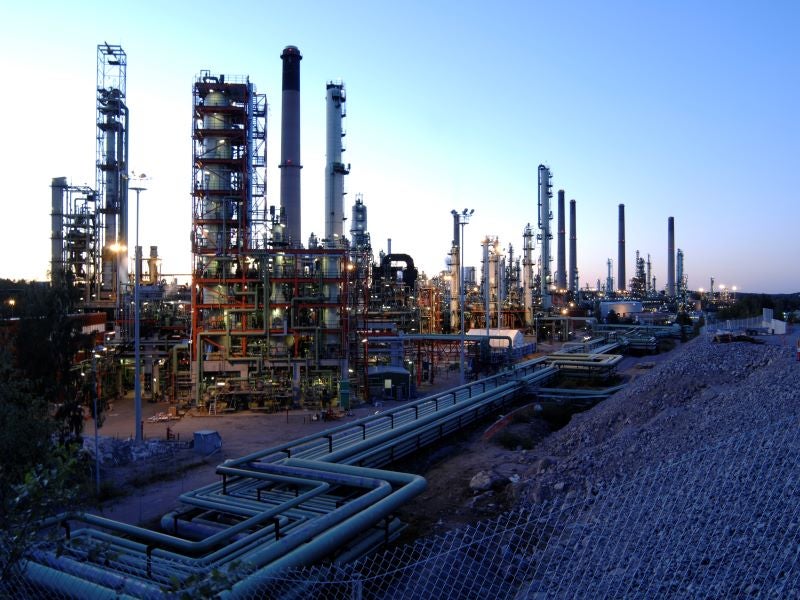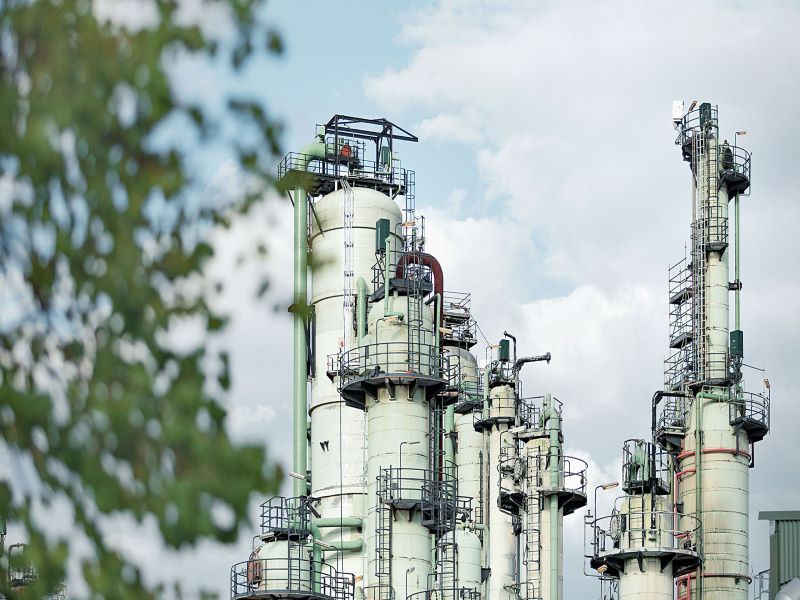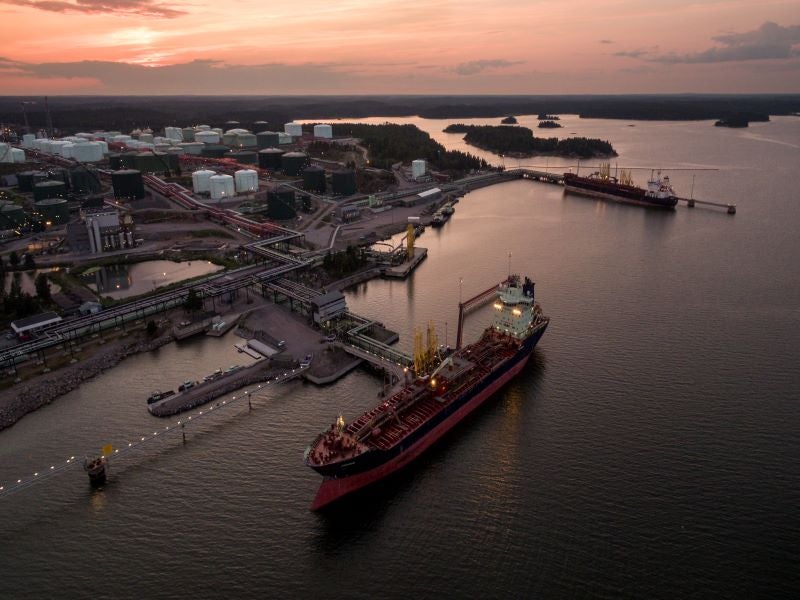The Neste Porvoo refinery, located in Porvoo in southern Finland, has been operational since 1965. Neste, an oil refining and marketing company based in Finland, owns and operates the refinery.
The Finnish government owns 35.9% stake in Neste, which also has operations in the Netherlands and Singapore and is the world’s biggest renewable diesel producer.
The refinery has a capacity to process 206,000 barrels a day (bpd) or 10.5 million tonnes of crude oil a year (Mtpa). It also processes other feedstocks to produce up to 12.5Mtpa of petroleum products a year.
Neste aims to transform Porvoo into the most sustainable refinery in Europe by 2030 as part of its goal to achieve carbon-neutral production by 2035.
The Finnish oil refiner announced plans to restructure the refinery’s operations to co-process renewable and circular raw materials in September 2020. It was followed by the signing of green power purchase agreements (PPAs) for the refinery in 2021.
The European Union (EU) Innovation Fund also selected the Neste Porvoo refinery to receive €88m ($100m) funding for a green hydrogen and carbon capture and storage (CCS) project in November 2021.
Porvoo refinery location and infrastructure details
The refinery is located in the Kilpilahti industrial area, Porvoo, approximately 30km east of Helsinki, Finland. It has eight million cubic metres of storage capacity for feedstocks and products. The site also houses a harbour and a product distribution terminal.
Neste’s Porvoo harbour receives between 1,100 and 1,400 vessel visits a year and has the biggest cargo tonnage capacity in Finland.
Neste Porvoo refinery process details
The Porvoo refinery complex produces a range of products including petrol, diesel, jet fuel, marine fuels, base oils, and renewable diesel.
It has four production lines and more than 40 processing units, including two renewable diesel units commissioned in 2007 and 2009, respectively.
The refinery produces renewable diesel from waste animal fat, used cooking oil, and vegetable oil utilising Neste’s proprietary NEXBTL technology.
Other key processing units at the oil refinery include an atmospheric crude distillation unit (CDU), a vacuum distillation unit (VDU), a fluid catalytic cracking (FCC) unit, a residue hydrocracking (RHC) unit, along with a very high viscosity index (VHVI) base oils unit and an isomerisation unit that started operations in June 2015. The refinery also has a hydrogen production plant and a sulphur recovery unit.
A new solvent deasphalting (SDA) unit at the refinery commenced operations in 2017. The SDA unit allowed for increasing diesel production and decreasing the production of heavy fuel oil.
Turnaround at Neste Porvoo refinery
Neste completed a major turnaround involving regulatory inspections and planned maintenance and asset improvement works at the Porvoo refinery in June 2021.
Although planned for completion in 2020, the refinery turnaround activities were delayed due to the COVID-19 pandemic. The total investment for the turnaround programme was €630m ($745m), of which €330m ($390m) was spent in 2021.
As part of the turnaround, preparatory measures were also undertaken to facilitate the co-processing of renewable and circular raw materials at the refinery.
Restructuring of Neste’s refinery operations in Finland
Neste shut down the 55,00bpd Naantali refinery operations in March 2021 as part of its refinery restructuring plans announced in September 2020.
While the terminal and harbour facilities at Naantali will continue to operate, Neste’s focus will be to drive the Porvoo refinery operations to produce more sustainable and competitive products.
Renewable power purchase agreements for the Porvoo refinery
Neste entered a ten-year power purchase agreement (PPA) with Statkraft to buy wind power for its Porvoo refinery in September 2021. Statkraft agreed to supply electricity to the refinery from the Mastokangas wind farm, owned by Aquila Capital, from mid-2022.
Statkraft had signed a PPA with Aquila Capital, a German real asset investment manager, in August 2021, to offtake 100% renewable power generated by the 68.4MW Mastokangas and the 43.2MW Korkeakangas wind farms.
Statkraft will supply 215GWh of electricity a year, which accounts for about 18% of the total power consumption at the Porvoo refinery, as per the agreement.
Neste had signed separate wind PPAs with Ilmatar in June 2021 and July 2020 and with Fortum in October 2019. Fortum started supplying electricity from its Kalax wind farm in Närpes, Ostrobothnia, Finland, to the Porvoo refinery in January 2021.
Neste aims to increase the use of renewable electricity at the Porvoo refinery to 100% by 2023.
Contractors involved
Neste Jacobs, now known as Neste Engineering Solutions, was contracted to deliver NAPCON Simulators for the FCC unit and the FCC gas recovery unit of the Porvoo refinery in February 2017.
Neste Jacobs had also bagged a contract to deliver a full-scale Operator Training Simulator for the crude oil distillation unit and the gasoline sulphur removal unit of the Porvoo refinery in January 2016.
EU Innovation Funding for Neste Porvoo refinery
The Neste Porvoo refinery’s green hydrogen and CCS project was one of the seven large-scale decarbonisation projects selected for funding by the EU under its first Innovation Fund call launched in July 2020. The total funding for the seven projects is estimated to be more than €1.1bn ($1.24bn).
Neste will prepare the grant agreement with the European Climate, Infrastructure and Environment Executive Agency (CINEA), the implementing body of the Innovation Fund. The agreement is expected to be finalised in the first quarter of 2022.
Currently in the feasibility stage, the refinery’s green hydrogen and CCS project will demonstrate clean hydrogen production through electrolysis using renewable energy, as well as capture carbon dioxide (CO2) and permanently store it in the North Sea.
The project is expected to reduce more than four million tonnes (Mt) of CO2 emissions at the Porvoo refinery in the first ten years of operation.





